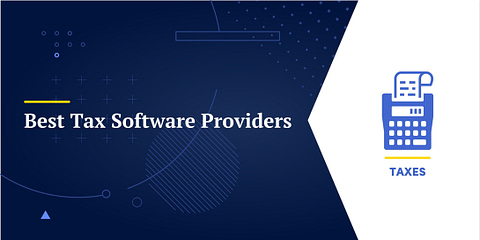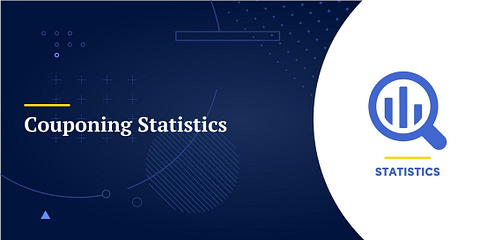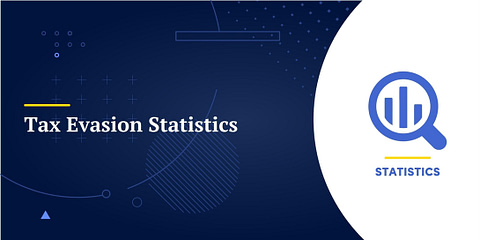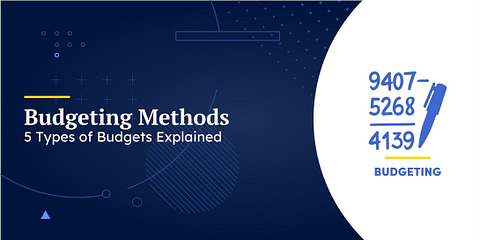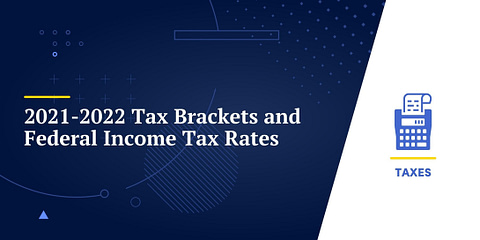America’s federal tax system has been frustratingly complicated for a long time. New legislation comes out every few years or so, seemingly just to keep people on their toes. It’s gotten so difficult for the layman to keep up that tax preparers are on track to generate $14.4 billion in revenue in 2023[1]. It’s okay to lean on their expertise, but you should know the basics: how taxes work, which ones apply to you, and when you need to get help.
Fortunately, the foundations of the American tax system have remained consistent for a long time. The tax deductions and credits available may change from year to year, but the basic principles do not. Here’s an introduction to the different types of taxes for individuals in America and an overview of how they function.
How Income Taxes Work
America taxes its citizens in many ways, but income taxes seem to get the most attention. There’s something viscerally upsetting about giving up such a large part of the fruits of your labor. I know my jaw hit the floor the first time I saw how much of my paycheck disappeared thanks to federal and state taxes.
Despite the discussion and scrutiny, Americans still seem to understand their income taxes the least. Here’s what you need to know about how income taxes work.
☝️ Some of the taxes in this article exist only at the federal level, some at the state, and others at both. The rules and rates vary widely from state to state, so make sure to double-check the details that apply in your location.
How Ordinary Income Taxes Work
Ordinary income includes things like your wages, interest from your savings accounts, and ordinary dividends. It gets taxed at the federal and the state level, and it’s usually what causes people to have to file an annual tax return.
There’s a surprisingly persistent misconception about ordinary income taxes: that earning more money can bump you into a higher tax bracket and leave you paying more tax on all of your income.
As a Certified Public Accountant (CPA), many people have asked me to help them avoid this, but that’s not how ordinary income taxes work. America’s income tax is progressive, which means that the government taxes you at a specific rate for every range of earnings.
👉 For example, if you’re a single filer, you’ll only pay 10% on your first $11,000, but you’ll pay 12% on income from $11,000 to $44,725.
These are the progressive federal tax brackets for the 2023 tax year (check your local state government’s website for their rates):
| TAX RATE BASED ON INCOME | SINGLE FILERS | HEAD OF HOUSEHOLD | MARRIED FILING JOINTLY/QUALIFYING WIDOW | MARRIED FILING SEPARATELY |
|---|---|---|---|---|
| 10% | $0 to $11,000 | $0 to $15,700 | $0 to $22,000 | $0 to $11,000 |
| 12% | $11,001 to $44,725 | $15,701 to $59,850 | $22,001 to $89,450 | $11,001 to $44,725 |
| 22% | $44,726 to $95,375 | $59,851 to $95,350 | $89,451 to $190,750 | $44,726 to $95,375 |
| 24% | $95,376 to $182,100 | $95,351 to $182,100 | $190,751 to $364,200 | $95,376 to $182,100 |
| 32% | $182,101 to $231,250 | $182,101 to $231,250 | $364,201 to $462,500 | $182,101 to $231,250 |
| 35% | $231,251 to $578,125 | $231,251 to $578,100 | $462,501 to $693,750 | $231,251 to $346,875 |
| 37% | $578,126 or more | $578,101 or more | $693,751 or more | $346,876 or more |
Income taxes are calculated by applying the rates above to your taxable income. That’s your gross income adjusted for any above-the-line deductions (like contributions to retirement accounts) and either itemized deductions or the standard deduction.
📘 Learn More: Would you like to pay less money in taxes? Take a look at our favorite tips for lowering your annual tax bill: 8 Practical Ways to Cut Your Taxes.
How Payroll Taxes Work
Income taxes aren’t the only thing that your employer deducts from your paycheck. They are also responsible for withholding payroll taxes, also known as FICA taxes. Unlike federal or state income taxes, payroll taxes are flat, not progressive. They include the following two taxes:
- Social Security at 6.2%
- Medicare at 1.45%
Both employers and employees have to pay this tax on all salaries, bonuses, and tips for a total of 7.65% payroll tax each.
👉 Social Security taxes are only applicable to income up to $160,200 for the 2023 tax year (it gets adjusted each year for inflation). That means that the most an employee can pay in Social Security taxes for 2023 is $9,932.
👉 Unfortunately, all earnings are subject to Medicare taxes. In fact, for earnings above $200,000, single filers have to pay an additional 0.90%.
Unlike income taxes, there’s not much you can do to avoid payroll taxes when you’re an employee. Any deductions you can qualify for only affect your adjusted gross income, which has no bearing on payroll taxes. The tax rates apply to your gross W-2 wages.
How Self-Employment Taxes Work
Self-employed people (as sole proprietors) pay the same income taxes that employees do, though they can take deductions for ordinary and necessary expenses that help reduce their income.
One notable difference is that, because the IRS considers them both employer and employee, they have to pay double the FICA tax: 15.3% total instead of 7.65%. Fortunately, they can deduct the “employer” half of that tax as a business expense.
☝️ Self-employed people can form business entities and use them to reduce the portion of their income subject to payroll taxes, among other things.
💡If you run a business or have a highly profitable side hustle, talk to a CPA to see if they can save you money with a more sophisticated tax strategy.
How Capital Gains Taxes Work
The next most common set of income tax brackets are the capital gain tax brackets. They’re generally more favorable than ordinary income tax rates, but they follow a similarly progressive structure. They apply to:
- Profits on capital assets sold after a year: If you sell a capital asset (like a car, house, or stock) at a gain after holding it for a year, the profits get taxed at capital gains rates. If you hold it for less than a year, the profits are ordinary income, and you’ll pay your marginal (highest) tax rate on them.
- Qualified dividends: Dividends from qualifying businesses get taxed at capital gain rates. Most dividends are qualified, but check the 1099-DIV form that your investment brokerage sends around tax time to make sure yours are.
Here are the federal capital gains tax brackets for the 2022 tax year (check your state website for its capital gains tax rates):
| TAX RATE BASED ON INCOME | SINGLE FILERS | HEAD OF HOUSEHOLD | MARRIED FILING JOINTLY/QUALIFYING WIDOW | MARRIED FILING SEPARATELY |
|---|---|---|---|---|
| 0% | $0 to $44,625 | $0 to $59,750 | $0 to $89,250 | $0 to $44,625 |
| 15% | $44,626 to $492,300 | $59,751 to $523,050 | $89,251 to $553,850 | $44,626 to $276,900 |
| 20% | $492,300 or more | $523,050 or more | $553,850 or more | $276,900 or more |
Which of the three rates you pay depends on your total taxable income for the year, not solely on how much capital gains income you earn.
👉 For example:
🙋♂️ Imagine that John has $39,400 of taxable ordinary income in 2021. He also sells shares ten shares of Stock A. He bought those shares for $500 apiece in 2017, and they’re now worth $1200 each.
📈 John has a long-term capital gain of $700 on each of his ten shares for a total of $7,000. His total taxable income is now $46,400, with half of his capital gains in the 0% tax bracket and half in the 15% bracket.
🧮 He would end up paying $266 in federal capital gains tax for the $1,775 of gains that fall into the 15% tax bracket.
📘Learn More: Tax-advantaged accounts can help you avoid paying capital gains tax on the dividends and gains generated by assets you invest in for retirement. Take a look at our introduction to the options available: An Introduction to Tax-Advantaged Retirement Accounts.
Other Taxes
Unfortunately, your income isn’t the only thing that you have to pay taxes on. Federal and state governments collect revenues in several other ways. Some of the most common are:
- Property Taxes: State and local governments charge property taxes on real estate, whether they’re personal or investment properties. They may demand anywhere from 0.28% to 2.47% of a property’s value each year.
- Estate and Gift Taxes: Transferring your wealth to someone (except your spouse) may trigger estate or gift taxes if your assets are valuable enough. Fortunately, they have to be really valuable. There’s an exclusion of $16,000 in gifts per recipient each year. There’s also a lifetime exclusion of $12,6 million that protects people when they exceed this, including estate transfers at death.
- Sales and Excise Taxes: State and local governments collect sales and excise taxes when you buy goods and services. The rates vary, ranging from 0% in Alaska to 7.25% in California.
These taxes don’t get as much widespread attention as taxes on income and earnings for many reasons. Not every American owns a house to pay property tax on, sales taxes only amount to a few dollars in most transactions, and gift taxes are easily avoidable for most people. It’s still worthwhile to acknowledge them. Property taxes are a vital consideration when buying a home, and sales taxes are a significant aspect of a city’s cost of living. Don’t ignore the other types of taxes just because they’re not coming out of your paycheck every two weeks.
📘Learn More: Interested in learning which of the taxes we’ve covered means the most to the IRS? Take a look at our review of their biggest sources of revenue: Federal Tax Revenues: Where Does the Money Come From?
Getting Professional Help
The tax guidance industry generates billions in revenue each year for good reason. Understanding how the code works and which variables affect each other is a full-time job. Unless you make it yours, you’ll probably be unable to keep up with all of the complications.
If your tax return only includes W-2 wages, you can get away with filing your taxes on your own. Look into the IRS Free File Program, which is designed for taxpayers filing relatively simple tax returns. If you’re self-employed or have a sophisticated investment strategy, it’s probably worth the money to hire a tax expert. A Certified Public Accountant or Enrolled Agent can help you make sure that you’re not missing anything that could cost you.




